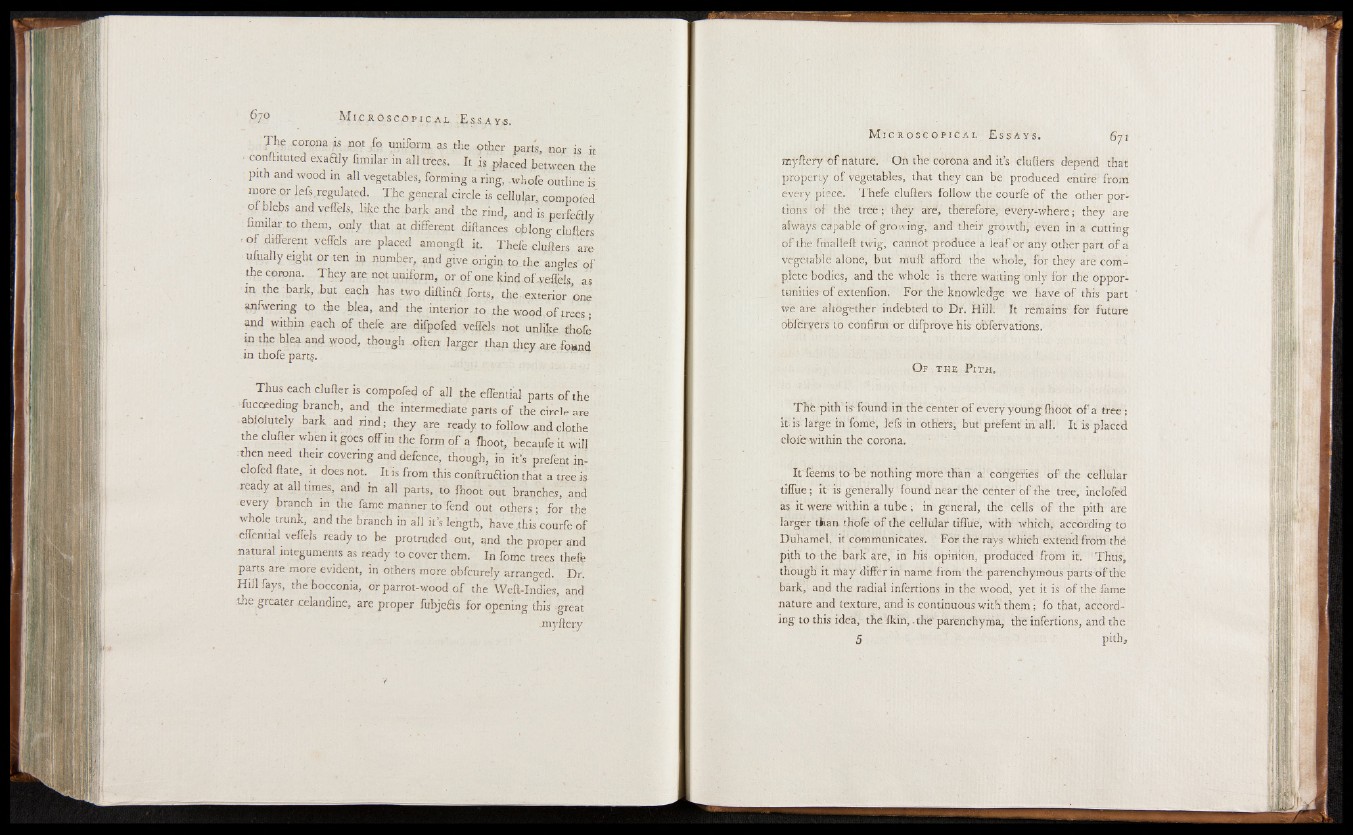
The corona is nor fo uniform as the other parts, nor is it
■ conftituted exaftly fimilar in all trees. It js placed between the
pith and wood in all vegetables, forming a ring, .whofe outline is
more or lefs.regulated. The general circle is cellular, competed
■ pfblcbs Md veffels, like the bark and the rind, and is perfectly
finulai- to them, only that at different diftances oblong duffers
-o f different veffels are placed amongft it. Thefe duffers are
ufually eight or ten in number, and give origin to the angles gf
die corona. They are not uniform, or o f one kind of .veffels, as
in the bark, but each has two diftinfl forts, the. exterior one
anfwering to the blea, and the interior to the wood o f trees •
and within each of thefe are difpofed veffels not unlike shofe
in the blea and wood, though often larger than they are found
in thofe parts.
Thus each duller is compofed of all the effential parts o f the
•fucceeding branch, and the intermediate parts o f the circle are
abfolutely bark and rind; they are ready to follow andclpthe
the duller when it goes off in the form of a fhoot, becapfe it will
then need their covering and defence, though, in it’s prefent i f
clofed Hate, it does not. It is from this conffrudion that a tree is.
ready at all times, and in all parts, to fhoot but brandies, and
every branch in the fame manner to fend out others; for the
whole trunk, and the branch in all it’s length, have .this courfe o f
effential veffels ready to be protruded out, and the proper and
natural integuments as ready to cover them. In fome trees thefe
parts are more evident, in others more obfeurely arranged. Dr.
Hill fays, thebocconia, or parrot-wood o f the Weft-Indies, and
the greater celandine, are proper fubjeds for opening this great
imyftery
myftery o f nature. On the corona and it’s duffers depend that
property of vegetables, that they can be produced entire from
every piece. Thefe duffers follow the courfe o f the other portions
of the tree; they are, therefore, every-where; they are
always capable o f growing, and their growth, even in a cutting
of the fmalleft twig, cannot produce a leaf or any other part o f a
vegetable alone, but muff afford the whole, for they are complete
bodies, and the whole is there waiting only for the opportunities
o f extenfion. For the knowledge we have o f this part
we are altogether indebted to Dr. Hill. It remains for future
obfervers to confirm or difprove his obfervations.
Or the Pith.
Thfe pith is-found in the center o f every young (hoot o fa tree;
it is large in fome, lefs in others, but prefent in all. It is placed
clofe within the corona.
Itfeems to be nothing more than a congeries o f the cellular
tiffue; it is generally found near the center o f the tree, inclofed
as it were within a tube; in general, the cells o f the pith are
larger than thofe o f the cellular tiffue, with which, according to
Duhamel, it communicates. For the rays which extend from the
pith to the bark are, in his opinion, produced from it. Thus,
though it may1 differ in name from the parenchymous parts o f the
bark, and the radial infertions in the wood, yet it is of the fame
nature and texture, and is continuous with them; fo that, according
to this idea, the Ikin, the1 parenchyma, the infertions, and the
5 phh,